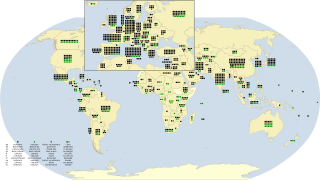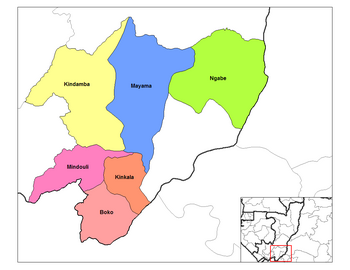
A World Heritage Site is a landmark or area which is selected by the United Nations Educational, Scientific and Cultural Organization (UNESCO) as having cultural, historical, scientific or other form of significance, and is legally protected by international treaties. The sites are judged important to the collective interests of humanity.

The Canadian Rocky Mountain Parks World Heritage Site is located in the Canadian Rockies. It consists of seven contiguous parks including four national parks:

The Ngäbe are an indigenous people within the territories of present-day Panama and Costa Rica in Central America. The Ngäbe mostly live within the Ngäbe-Buglé comarca in the Western Panamanian provinces of Veraguas, Chiriquí and Bocas del Toro. They also have five indigenous territories in southwestern Costa Rica, encompassing 23,600 hectares: Coto Brus, Abrojos Montezuma, Conte Burica, Altos de San Antonio and Guaymi de Osa. In the early 21st century, there are approximately 200,000-250,000 speakers of the Ngäbere language.

As of July 2018, there are a total of 1,092 World Heritage Sites located in 167 States Parties, of which 845 are cultural, 209 are natural and 38 are mixed properties. The countries have been divided by the World Heritage Committee into five geographic zones: Africa, Arab States, Asia and the Pacific, Europe and North America, and Latin America and the Caribbean. The country with the largest number of sites is Italy, with 54 entries. The country with the largest number of sites by itself alone is China, with 53 entries.

The World Heritage Committee is a committee which selects the sites to be listed as UNESCO World Heritage Sites, including the World Heritage List and the List of World Heritage in Danger, monitors the state of conservation of the World Heritage properties, defines the use of the World Heritage Fund and allocates financial assistance upon requests from States Parties. It is composed of 41 states parties that are elected by the General Assembly of States Parties for a four-year term.

The UNESCO World Heritage Site Historic Monuments of Ancient Kyoto encompasses 17 locations in Japan within the city of Kyoto and its immediate vicinity. The locations are in three cities: Kyoto and Uji in Kyoto Prefecture; and Ōtsu in Shiga Prefecture; Uji and Ōtsu border Kyoto to the south and north, respectively. Of the monuments, 13 are Buddhist temples, three are Shinto shrines, and one is a castle. The properties include 38 buildings designated by the Japanese government as National Treasures, 160 properties designated as Important Cultural Properties, eight gardens designated as Special Places of Scenic Beauty, and four designated as Places of Scenic Beauty. UNESCO listed the site as World Heritage in 1994.










